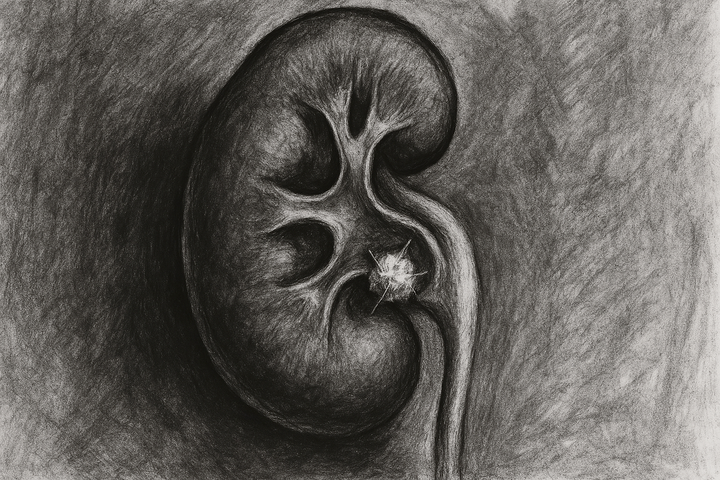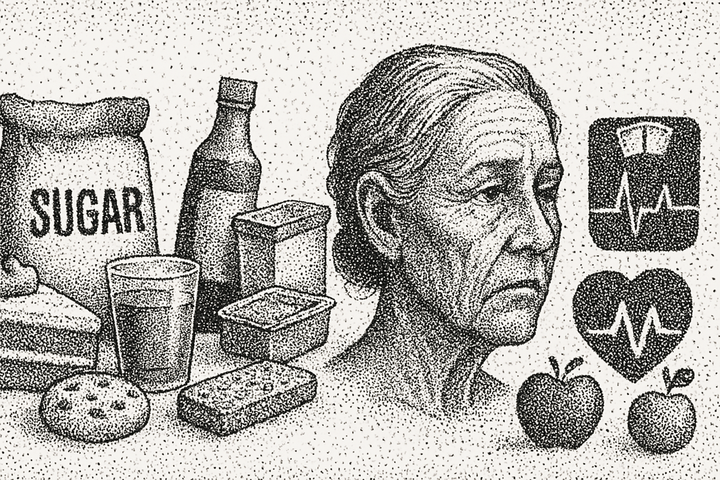The Recipe for Healthy Aging: Insights from a 30-Year Study

Introduction
As the global population continues to age, the quest for strategies to promote not just longevity but healthy aging—living to older ages free of major chronic diseases and with maintained cognitive, physical, and mental health—has become increasingly critical. A recent study published in Nature on March 23, 2025, titled "Optimal dietary patterns for healthy aging" (Optimal dietary patterns for healthy aging), provides significant insights into how diet influences healthy aging. This survey note delves into the study's key findings, its implications for longevity, and supporting evidence from other research, offering a comprehensive overview for readers interested in nutrition and aging.
Study Overview and Methodology
The study utilized longitudinal data from two large US cohorts: the Nurses' Health Study (NHS) and the Health Professionals Follow-up Study (HPFS), involving a total of 105,015 participants (66% women, mean age 53 years at baseline). The follow-up period extended up to 30 years, from 1986 to 2016. Healthy aging was defined as surviving to age 70 without 11 chronic diseases and maintaining intact cognitive, physical, and mental health. The study assessed adherence to eight dietary patterns—AHEI, aMED, DASH, MIND, hPDI, PHDI, rEDIH, and rEDIP—and the consumption of ultraprocessed foods (UPF).
After 30 years, 9,771 participants (9.3%) achieved healthy aging, with 7,602 (10.8%) from NHS and 2,169 (6.2%) from HPFS. The study also broke down healthy aging into domains: 39,769 (37.9%) survived to 70, 23,908 (22.8%) were free of 11 chronic diseases, 35,555 (33.9%) had intact cognitive function, 29,543 (28.1%) had intact physical function, and 27,842 (26.5%) had intact mental health.
Key Findings
The results showed that higher adherence to all eight dietary patterns was associated with greater odds of healthy aging, with odds ratios (ORs) for the highest versus lowest quintile ranging from 1.45 (95% CI 1.35–1.57) for the healthful plant-based diet (hPDI) to 1.86 (95% CI 1.71–2.01) for AHEI, all with P<0.0001. Domain-specific ORs highlighted varying strengths: for cognitive health, PHDI was strongest (OR 1.65, 95% CI 1.57–1.74); for physical health, AHEI was strongest (OR 2.30, 95% CI 2.16–2.44); for mental health, AHEI was again strongest (OR 2.03, 95% CI 1.92–2.15); for being chronic disease-free, rEDIH was strongest (OR 1.75, 95% CI 1.65–1.87); and for survival to age 70, PHDI was strongest (OR 2.17, 95% CI 2.05–2.30).
Conversely, higher UPF consumption was associated with 32% lower odds of healthy aging (95% CI 27–37%). Subgroup analyses revealed stronger associations in women (P interaction 0.0226 to <0.0001), smokers (P 0.047 to <0.0001), those with BMI>25 (P 0.042 to <0.0001), and those with lower physical activity levels (P 0.038 to <0.0001), with no significant ancestry interaction.
The dietary factors contributing to higher odds included fruits, whole grains, vegetables, unsaturated fats, nuts, legumes, and low-fat dairy, while lower odds were associated with trans fats, sodium, total meats, and red/processed meats.
Below is a table summarizing the key odds ratios for healthy aging by dietary pattern:
Below is a table defining each dietary pattern, including their full names and key components:
Importance to Longevity
The findings are particularly significant for longevity, as they extend beyond mere disease prevention to encompass overall healthy aging. Healthy aging, as defined, includes not only surviving to age 70 but also maintaining cognitive function, physical mobility, and mental health without major chronic diseases like heart disease, cancer, or diabetes. This aligns with the concept of healthspan, which is increasingly recognized as crucial alongside lifespan.
The study's emphasis on dietary patterns like AHEI, which scores highly for diets rich in fruits, vegetables, whole grains, and unsaturated fats while limiting red meat, trans fats, and sugars (Alternative Healthy Eating Index definition), suggests that such diets can modulate aging pathways, reducing inflammation and oxidative stress, which are linked to chronic diseases. The negative association with UPF, often high in added sugars, unhealthy fats, and sodium, underscores the need to limit processed foods to maintain health into older age.
Supporting Evidence from Other Studies
Several studies corroborate the Nature study's findings, reinforcing the link between dietary patterns and healthy aging:
- Dietary Patterns and Healthy or Unhealthy Aging (Dietary Patterns and Healthy or Unhealthy Aging): This review highlights that nutritional determinants significantly impact the risk of age-associated non-communicable diseases and mortality. It discusses how healthy plant-based diets are associated with reduced frailty, a hallmark of unhealthy aging, and contrasts this with the detrimental effects of ultra-processed diets, aligning with the UPF findings.
- Healthy Aging and Dietary Patterns (Healthy Aging and Dietary Patterns): This article notes the shift in nutrition research from isolated nutrients to whole dietary patterns, emphasizing their synergistic effects. It reviews traditional diets like Mediterranean and contemporary patterns like DASH, which are associated with healthy longevity, supporting the study's focus on multiple dietary indices.
- Diet strategies for promoting healthy aging and longevity: An epidemiological perspective (Diet strategies for promoting healthy aging and longevity: An epidemiological perspective): This narrative review from the Journal of Internal Medicine summarizes findings from large cohort studies, indicating that maintaining a healthy weight and adhering to diets like AHEI, DASH, and healthy plant-based diets are pivotal for reducing mortality and promoting healthy aging. It also discusses traditional diets like Nordic and Okinawa, which share similarities with the studied patterns.
These studies collectively suggest that the findings from the Nature article are part of a broader consensus on the role of diet in aging, providing a robust foundation for public health recommendations.
Practical Implications and Recommendations
Given the study's insights, individuals can take proactive steps to promote healthy aging through diet:
- Adopt Healthy Dietary Patterns: Focus on diets like AHEI, which emphasize fruits, vegetables, whole grains, nuts, legumes, and unsaturated fats, while limiting red and processed meats, trans fats, and sodium. Other beneficial patterns include the Mediterranean diet, DASH, and plant-based diets, all of which have been linked to lower chronic disease risk.
- Limit Ultraprocessed Foods: Reduce intake of UPFs, such as packaged snacks, sugary drinks, and processed meats, which are associated with lower odds of healthy aging. Opt for whole, minimally processed foods instead.
- Maintain a Healthy Weight: Keep a healthy weight throughout life, as obesity is linked to increased chronic disease risk, and the study showed stronger associations in those with BMI>25.
- Incorporate Regular Physical Activity: Complement a healthy diet with regular exercise, especially given the stronger effects noted in less physically active individuals, to support cognitive and physical health.
- Regular Health Monitoring: Engage in regular health check-ups to monitor and manage potential health issues early, enhancing the likelihood of aging healthily.
Discussion and Future Directions
While the study provides compelling evidence, it's worth noting that dietary patterns like rEDIH and rEDIP, mentioned in the study, are less commonly discussed in the literature, possibly indicating specific indices developed for this research. Further research could clarify their definitions and generalizability. Additionally, the subgroup findings, particularly for smokers and those with higher BMI, suggest targeted interventions may be needed, but more studies are required to understand these interactions fully.
The study's reliance on self-reported dietary data and the long follow-up period are strengths, but potential biases, such as recall bias, should be considered. Future research could explore these dietary patterns in diverse populations to enhance global applicability.
Conclusion
The Nature study offers valuable insights into how dietary patterns can promote healthy aging, with significant implications for longevity and quality of life. Supported by other research, it underscores the importance of whole diets over isolated nutrients and highlights the detrimental role of ultraprocessed foods. By adopting these dietary strategies, individuals can take meaningful steps toward aging healthily, contributing to both personal well-being and broader public health goals.




Comments ()